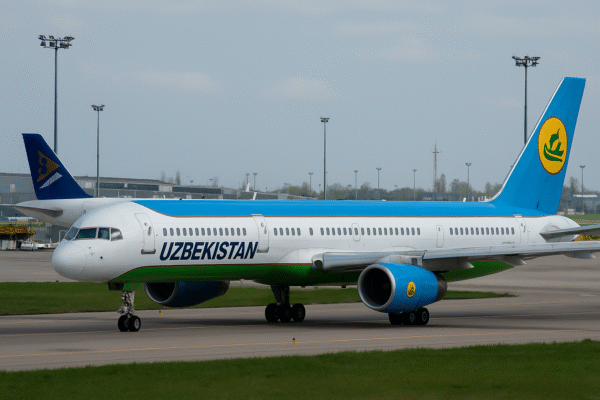Kazakhstan and Uzbekistan have taken a historic step in civil aviation cooperation, agreeing to expand weekly flights between the two nations to 42 services per week. The agreement, announced by the Civil Aviation Committee, reflects both governments’ shared vision of enhancing air connectivity as a foundation for economic growth, cultural exchange, and tourism development in Central Asia.
The deal aligns with regional collaboration goals under the Central Asia–China (C5+1) framework, highlighting the importance of transport infrastructure in shaping the future of Eurasian integration.
More Flights, More Opportunities for Travelers
Under the new aviation framework, flights will operate more frequently between Almaty and Tashkent, as well as Astana and Tashkent, offering passengers a wider choice of schedules and competitive fares. Additionally, 14 flights per week will connect other routes across the two nations, creating greater accessibility for tourists, entrepreneurs, and investors.
For travelers, this means shorter waiting times, increased affordability, and easier cross-border mobility—all crucial elements in promoting Central Asia as a tourist-friendly region.
Tourism Growth Along the Silk Road
Tourism stands to be one of the biggest beneficiaries of this aviation boost. Both Kazakhstan and Uzbekistan are home to UNESCO World Heritage Sites and iconic Silk Road destinations. Uzbekistan’s ancient cities—Samarkand, Bukhara, and Khiva—offer visitors a journey through Islamic architecture, vibrant bazaars, and centuries-old madrassas. Meanwhile, Kazakhstan attracts tourists with its steppe landscapes, modern capital Astana, and adventure tourism in Almaty’s mountain ranges.
With easier access, international tourists can now combine both countries in a single itinerary, experiencing the essence of the Silk Road across borders without logistical hurdles.
Business and Economic Impact
Beyond tourism, the expanded air network is expected to strengthen trade and investment flows between the two nations. Business travelers will benefit from better flight availability, enabling smoother negotiations, quicker transactions, and more effective regional collaboration.
Kazakhstan and Uzbekistan are both emerging markets with strong ambitions in energy, logistics, agriculture, and digital technology. Improved aviation connectivity provides the infrastructure necessary to sustain joint ventures and attract foreign direct investment.
A Step Toward Regional Integration
The aviation deal also carries strategic importance. Central Asia is fast becoming a transportation and logistics hub at the crossroads of Europe and Asia. By boosting flight frequency, Kazakhstan and Uzbekistan are not only addressing immediate travel demand but also positioning themselves as aviation leaders in the region.
This move supports the larger vision of regional integration, where Central Asian nations work collectively to enhance infrastructure, tourism, and trade corridors.
Passenger Experience and Future Expansion
Authorities from both nations have emphasized that the expansion is not only about quantity but also about quality of service. Plans include improving aviation safety standards, introducing modern aircraft, and ensuring passenger convenience through digital ticketing systems and streamlined airport services.
Looking ahead, both countries are expected to negotiate for more direct international routes connecting Central Asia to Europe, the Middle East, and Asia-Pacific destinations. This would further establish Kazakhstan and Uzbekistan as key gateways to the Silk Road for global travelers.
Sustainable Aviation and Green Tourism
In line with global aviation trends, both Kazakhstan and Uzbekistan are exploring sustainable practices in air travel, including eco-friendly aircraft operations, improved fuel efficiency, and tourism programs that focus on preserving cultural heritage and natural landscapes. This ensures that the tourism boom resulting from enhanced connectivity will remain environmentally responsible and future-ready.
Conclusion: A Win-Win for Central Asia
The decision to expand flight frequencies between Kazakhstan and Uzbekistan marks a turning point in Central Asian aviation and tourism. By offering 42 weekly flights, the two nations are not only meeting growing travel demand but also laying the foundation for economic growth, cultural diplomacy, and regional connectivity.
For tourists, this means seamless exploration of the Silk Road’s treasures, while businesses and investors gain a more efficient platform for collaboration. For Central Asia as a whole, this aviation breakthrough represents a giant leap toward becoming a global travel and trade hub.
For more travel news like this, keep reading Global Travel Wire
















